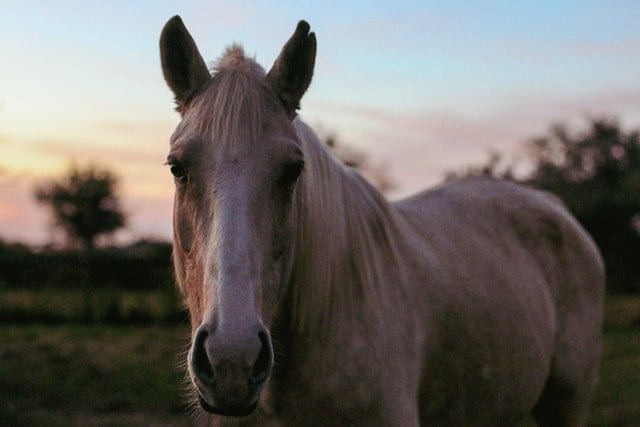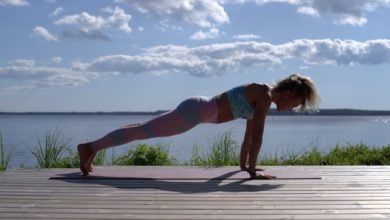How and where to rent a horse for a day?

How and where to rent a horse for a day?
Did you take your first riding lesson and now feel like giving up everything you do and becoming a full-time cowboy or cowgirl? After the first lesson, I felt the same way, but found a better option to put me on the express train in the equestrian world because of my situation.
And I want to share this option with you. Before buying a horse or considering a long-term rental option, you also have the opportunity to rent a horse for the day.
Renting a horse for a day is a great way to spend some quality time with your horse if you don’t have the finances or if your situation does not allow you to enter into a long-term commitment.
Where can you rent a horse?
Horse training facilities, local stables, commercial trail riding camps, and private owners are usually the primary sources for creating a potential rental.
Before we discuss the differences between each rental source, take a second to think about the riding environment you hope to experience.
For example, if you are more than happy to ride through beautiful green pastures, plan to call a stable or training facility. On the other hand, if you are the adventurous type or a nature lover, then commercial lane riding camps will best meet your cravings.
Trail riding facilities are commonly located near wooded areas or beach access areas, and are best at letting you and your horse meander through miles and miles of woodland trails, sometimes even ending along the water’s edge for a gentle trot.
horse training facilities
Due to the professional nature of horse training facilities, renting a horse for a day can be more challenging than you might expect. In any tenancy situation, you must usually sign a lease agreement and waive liability if such and such and such happen.
I’m just kidding. Hiring a horse is a very serious undertaking, and a horse training facility has every right to take every necessary precaution to keep you and the health of their horses.
The owners and staff of horse training facilities are dedicated to training horses that typically perform at one or more of the different riding venues available.
And since they have prepared their horses for competition in an arena or other viewing platform, health and wellness is important because an injured horse requires expensive long-term treatments to get them back into peak shape when possible.
Therefore, in addition to legal documents, most often you will have to prove your ability to ride to the facility. The evaluation journey usually does this on the spot.
The advantage of going for a daily rental of horses from an equine training facility is that you will learn about generations of experience in various equine disciplines.
Your experience may inspire you to leap into the world of equestrian sports.
Private owner rentals
Horse owners will sometimes offer short-term horse rentals to interested riders if they are in a situation where they need to ride their horses frequently or when they are considering selling one of their horses.
If you have the experience and are in the social circle of the horse owner, you may have the opportunity to hire his horse for competition. Don’t be surprised if you are required to provide insurance in addition to signing model liability agreements.
Once you enter the equestrian network, you will become part of a very close-knit community, where friends even offer to take other people’s horses across the country.
So if you know someone who knows someone, you may find yourself in front of a private owner who is willing to rent their horse for a day out on the trails, rather than just the paddock area.
local stables
Horse stables are noticeably quieter than a typical professional training facility because they often introduce horses to young children and adult beginners for the first time.
Look in your local area for a stable of horses that you can go to visit. Oftentimes it is the case. You will find one much closer than you expected. For example, I live only ten kilometers from a stable behind a pine forest connected to a beautiful natural park for children. And guess what, I only discovered it after venturing into this park for over a year.
Horse stables offer you another great opportunity to see a lot of the work involved in maintaining the horses and their facilities. While you’re walking around the stable, you might run into a vet that fits your horse in new shoes, a groomer, or even an equestrian vet.
Usually, horse stables offer various services and activities, including:
- horse riding lessons
- horse training
- horse education programs
- Exciting riding camps
- horse riding, and
- Even a birthday party for young riders is in the making.
Rental rates typically range from $35 to $50 an hour; However, prices can fluctuate greatly depending on your location and a particular stable.
The popular Sun City stables near Tampa Bay, Florida charge $35 an hour or $105 for the entire day. Their website states that “you can trot and sprint [their] horses [and they] are the only stable around that allows it.”
Commercial lane riding camps
Whether you choose a guided or unguided tour, riding the commercial trail may be the most open alternative if you want to hire a horse for the day. And since I love the outdoors, I find that commercial trail riding facilities usually set up camp in great locations.
With prices similar to local horse stables, trail riding is an excellent way for beginners to learn about equestrianism. Additionally, since the horses are already well trained, you can benefit from partnering with a horse who is willing to tolerate many of the riding mistakes that beginners might make.
The horses are used to the trails and will be happy to follow them with a group of other riders or join you on a special adventure. But be sure to call the facility in advance and ask for a list of their requirements.
Some commercial facilities will not allow unguided trips with their horses, and some may not allow you to bring their horses to a trot or jog. But, again, please understand that such measures have been put in place to protect you and their horses.
Typically, at the beginning of a trail riding experience, trained staff will provide the group with ground rules and behavior around the horses.
In addition to basic instructions, trained personnel will demonstrate some of the basic movements that each member of the group will perform before reaching the tracks.
At the very least, you need to know how to start, stop and turn a horse. Already, with these basic movements, you will learn invaluable techniques such as:
- How to give command to a horse
- Proper position on the saddle
- How to hold it properly
- Proper placement of the foot in the stirrup
- How to ride and get off a horse
Although you will not enter a world-class arena with these new skills, you will be able to ride successfully most of the time. I remember my first flight. My horse loved the walk in reverse and the sudden stop to pigeons along the ride.
So why should you have a horse for today?
I think renting a horse for the day makes for a nice experience if you are interested in the equestrian world but don’t have the time or money to invest in full time ownership responsibility.
Hiring a horse also offers you the opportunity to gain multidisciplinary experience from various experienced riders and trainers. Some may even like you especially and give you some trade secrets that will be essential to your success as a horse rider.
Riding horses is not like any other hobby you have done before. The object of the hobby is a real breathing animal that requires lots of attention and lots of love on a daily basis.
Love is about more than giving rewards and providing enough pasture for a horse to graze. A relationship with a horse requires someone who is dedicated to quality training, which includes more than I command, you follow the techniques of style.
Horses should naturally explore their cognitive abilities in an environment that provides a calm and enjoyable atmosphere. When inquiring about the various rental sources, I suggest that you take the time and go on a trip to visit the facility before your planned trip.
Things to look for:
#1 – Do the horses look healthy and well taken care of?
You may not be an equine expert, but some signs to watch out for include:
- Sores under the saddle and circumference
- limping
- Dull or soiled hair coats
- General fitness (thin with ribs or weight gain)
#2 – How good are the stables and horse living areas?
The horse’s living environment should look clean and tidy, with plenty of dry hay. Also check if the horses’ living area has sufficient air circulation. In addition, you can peek outside to see if the shelter can protect the horses from cold and harsh weather.
#3 – Are the owner and staff willing to answer your questions?
I tend to rely on my intuition a lot when reading about someone. I suggest that you trust your intuition when you talk to the staff at the riding facility. I believe that if the owners and staff exude passion when they talk about their horses and driving the horses, my confidence in their care of the animals would be much higher than anyone who would want to give me an adequate answer to shut me up and move on with me.
The above is not an exhaustive list for inferring whether or not a riding facility is entirely ethical in its practices; However, it does offer some good pointers. Those red flags may reveal animal abuse, and I’m just as sure as me you don’t want any part of that.
Now, let’s take this one step further, and for a moment, consider the ethical ramifications of horse riding and its business — that could lead to another article entirely.
Imagine making a visit to a riding facility and noticing any of the red flags listed above. Then my advice would be to do a little research of your own around the establishment and perhaps talk to the locals in the community to find out any personal experiences or insight.
You may discover some information (you probably wish you hadn’t) that can be crucial to ensuring the safety and well-being of horses. I would also strongly suggest that you contact your nearest animal humane association and mention some red flags that have caught your eye.
A member of the humane community or a related agency can take a closer look at it and give their professional opinion about the environment and conditions in which horses live.
Perhaps all was well, and your untrained eye aroused some suspicion, or perhaps your imagination was running too fast; However, your actions can be a saving grace for some mistreated animals.
As an animal advocate, I cannot in good conscience write an article without noting the importance of caring for these majestic creatures with whom we are privileged to coexist.
What do I bring with you
I have a confession – I don’t trust pockets, so you’d never find me without a backpack of some sort. However, a drawstring bag or zip pouch is a great and safe way to keep track of all of your small items that could get loose or damaged during the activity.
In addition to the backpack, you may want to consider bringing these items to your daily date with your horse friend:
- Insulated water bottle or Camelbak
- A helmet and a pair of riding shoes
- Snacks for you and maybe a reward for the horse if allowed
- Jacket or coat depending on the weather
- pair of gloves
- sunblock cream
Always order a recommended list of essentials from the riding camp you’ve booked. Also, be sure to prepare any documents they may require before your arrival.
last thoughts
With a little homework and research, you’ll be able to rent a horse for a day from an ethical riding camp and enjoy an initial exposure to the magic of the equestrian world.
Would you please share your questions or concerns about renting a horse for a day in the comments section below?



